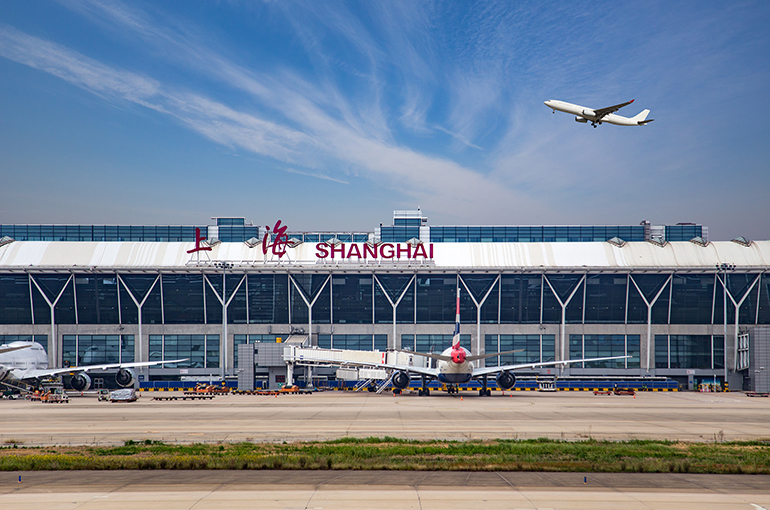Select Language:
The cargo and passenger capacities at Shanghai’s two airports, along with their transit capabilities, all reached new heights last year, according to details shared during the North Bund Forum 2025.
Last year, Shanghai Pudong and Hongqiao International Airports handled a combined passenger volume of 125 million, ranking third globally, revealed Zhang Xiaohong, vice mayor of Shanghai, at the three-day forum concluding today. Their total cargo throughput surpassed 4.2 million tons, placing them second worldwide.
Among Chinese cities, Shanghai boasts the highest numbers for passenger arrivals and departures. Pudong Airport stands out as the only airport globally with both passenger and cargo traffic securing a position in the top 10, stated Zhou Hao, president of the Shanghai Airport Authority, which operates both airports.
Expansion plans for Pudong Airport are expected to further boost capacity. Once its fourth construction phase is complete, the airport will feature three terminals and four runways, enabling it to handle 130 million passengers annually and process 5.9 million tons of cargo each year.
The transfer passenger rate at Pudong and Hongqiao airports hit 15.7 percent last year, setting a new record, noted Zhang.
China Eastern Airline partnered with SAA to establish Shanghai as China’s largest aviation hub, with the carrier now offering the most international and regional destinations in the country, announced Chairman Wang Zhiqing during the forum.
Following the company’s strategic focus to “fly far, fly internationally, and explore emerging markets,” China Eastern is actively developing a global connectivity corridor, Wang explained.
By June 30, the number of international and domestic flights operated by China Eastern from Shanghai had exceeded pre-pandemic levels in 2019, making it the airline with the most international destinations in China, based on the airline’s semiannual financial report.
Additionally, China Eastern is the leading Chinese airline to Australia, Japan, Malaysia, New Zealand, Singapore, South Korea, and Thailand, with the most routes to Japan and South Korea, the financial report indicated.
The ratio of Japanese and South Korean passengers transferring through Chinese airports to those passing through Japan and South Korea has shifted to 1:0.4 in the first half of this year, from 1:9 in April 2023, during the early phase of international flight recovery post-COVID-19, stated Wan Qingchao, vice president of China Eastern Airlines in Shanghai, at the forum.
More than half of Japanese and South Korean travelers transiting through Chinese airports selected Shanghai as their transfer hub, up from 35 percent previously, Wan added.
Last year, China Eastern processed 8.36 million international transfer passengers at Pudong Airport, representing 81 percent of the airport’s total transfer volume, Wan noted.
The number rose 27 percent in the first half of this year compared to the previous year, reaching nearly 4.8 million, further establishing China Eastern as a key driver of Pudong’s international transfer growth.





